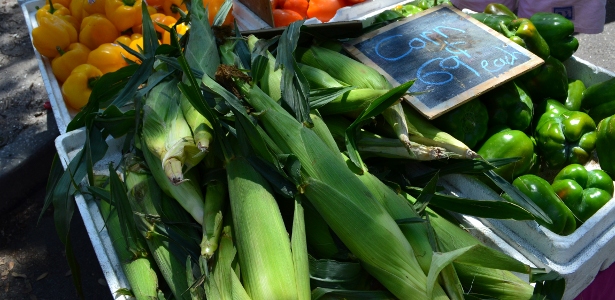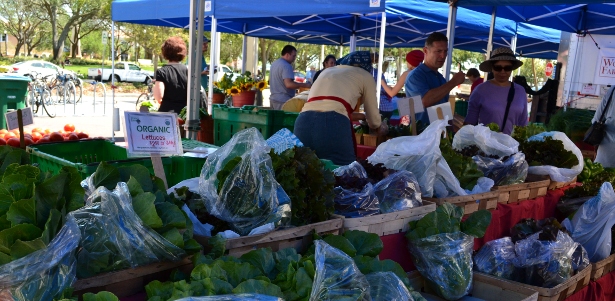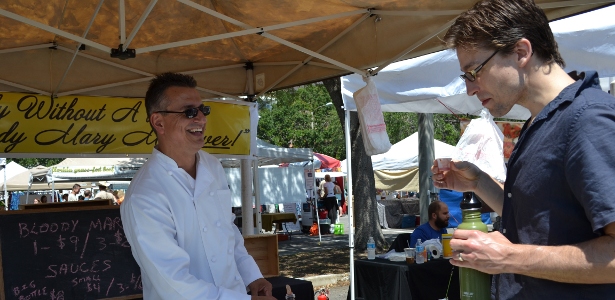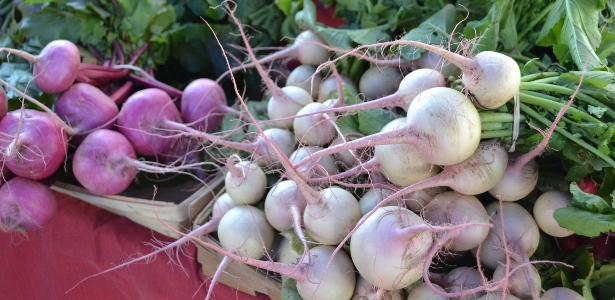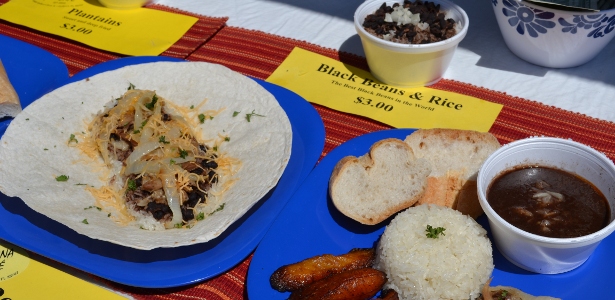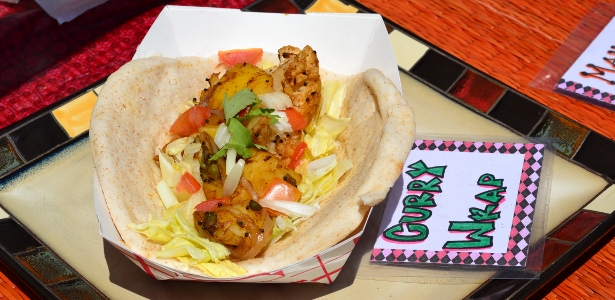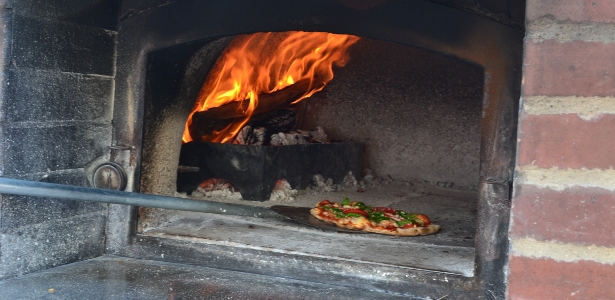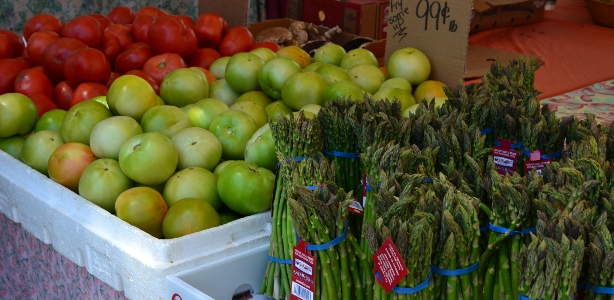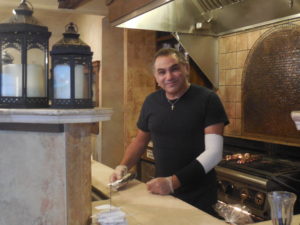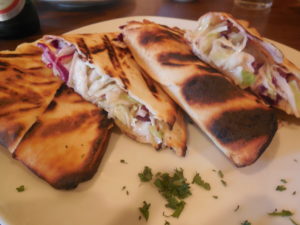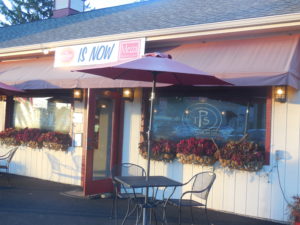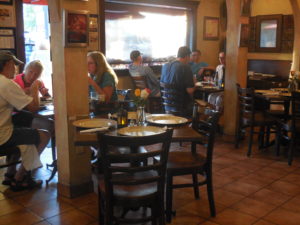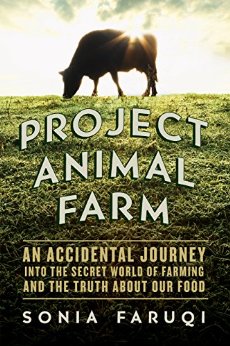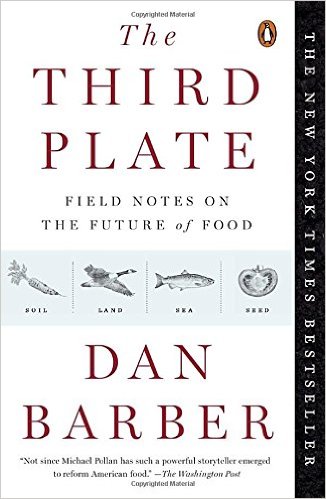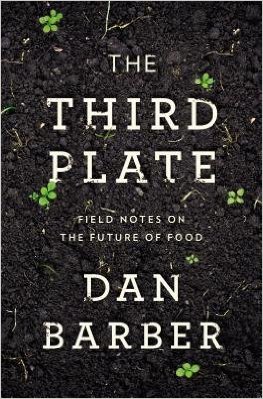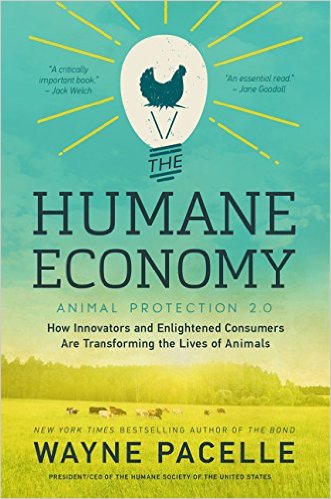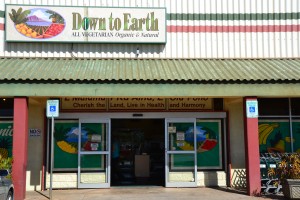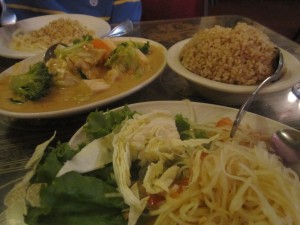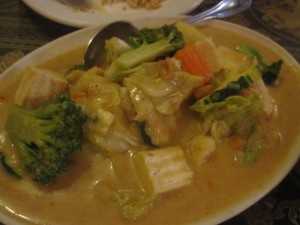Farmacology – What Innovative Family Farming Can Teach Us About Health and Healing
by Daphne Miller, MD. 2013 HarperCollins Publishers. List $23.95 HC $20.16, PB $14.22, Kin $10.99
One of the more interesting overviews of the relationship between health and farming, Farmacology explores the revitalization of agriculture as a metaphor for integrative approaches to medicine as the author looks for solutions for her most difficult cases. At times, Dr. Miller (A San Franciscan integrative medicine physician) stretches the conceit but I didn’t mind because she took us on one of the best journeys through revisionist agriculture that I have read. Everything old is new again. Miller visited seven farms, beginning with author/farmer Wendell Berry’s fabled homestead – where Berry helped her to construct the parameters for her search.
With a humble beginners’ mind, Miller visited an Ozark ranch, a Washington state biodynamic farm, a pair of side-by-side organic chicken egg farms that used different approaches, a set of long-lived Bronx community gardens, a vineyard and an herb farm. Each eschewed, to some degree, the green revolution’s factory farming inputs in favor of returning to the more environmentally sensitive approaches that predated the arrival of post-war pesticides and chemical fertilizers. With each investigation, Miller related the lessons learned on that farm with potential solutions for a particularly challenging patient Sometimes, the comparisons didn’t really work but other times they were viable and insightful. Two stand out: a vineyard’s pest-management approach paralleled innovative thoughts on treating cancer and the process of rejuvenating the soil suggested useful tactics for reassessing and reclaiming our own bodies.
Probably the most endearing chapter was the one about the two egg farms – both owned by a father and son team. This was a bit of an experiment for them. One farm met all the requirements for organic eggs and the other went considerably further and actually delivered organic, truly pastured eggs. They discovered that the pastured eggs were of considerably higher quality but the output was, surprisingly, somewhat lower. The pastured farm also demonstrated the community nature of hens – how much they love a good gossip and hanging out with special friends (this chapter was related to stress-management). The other interesting note – for those who eat eggs – is that organic doesn’t mean pastured – all you need is an open door someplace and a small cement pad for the thousands of chickens house in that multi-level, window-less barn. When you understand the flock nature of chickens, Tyson’s approach becomes even more deplorable.
Farmacology is an easy read that delivers a wealth of thought-provoking information.
Project Animal Farm: an accidental journey into the secret world of farming and the truth about our food
by Sonia Faruqi. 2016 Pegasus Books List $27.95, HD $19, PB $16.95, Kin $14
Ms. Faruqi, a former Wall Streeter, decided to volunteer at a Canadian organic dairy farm and that started an international journey to explore animal agriculture. Her up-close and personal experiences – from Canada to Indonesia, Malaysia, Singapore, Dubai, Mexico, Belize, and finally the US – are interspersed with relevant facts and figures about animal farming. A focused, topic-specific memoir (with extensive references) as opposed to a traditional investigative reporting piece, it is nevertheless a compelling read. The distressing, horrendous descriptions of a world gone horribly awry are lightened by a very few rays of hope. Ms. Faruqi concludes with the following solutions (which she has demonstrated throughout the book): 1. Large pastoral farms – reflecting crucial economies of scale – are the future ideal. 2. Genetic selection has created animals that are unable to function properly promulgating unnatural behaviors. 3. Gender diversity among famers needs to increase – more women!! 4. Agribusiness needs to police itself, recognize the obvious problems and create solutions. 5. Farm inspections need to be done by independent third parties. 6. Farm animals need regulations that recognize they are sentient beings and treat them as such (see #5). 7. Labels have to make sense and be enforced – for instance, the label “organic” (theoretically the most specific and meaningful term) is often achieved with lip service, blatant abuse and loopholes (see #5).
The Humane Economy: how innovators and enlightened consumers are transforming the lives of animals
by Wayne Pacelle, Presdient & CEO of the Humane Society of the United States. William Morrow. April 2016. Hard Cover $18.38, Paperback $12.99 (March 2017), Kindle $12.99
Mr. Pacelle covers the whole enchilada of animal abuse in the US – from puppy mills and dog fighting to battery cages and gestation crates to animals in film, wildlife management, animal testing to stepping outside the US to Africa’s wildlife. It’s an upbeat, well-done, informative overview that hails the HSUS’ successes but with only one chapter devoted to each issue, depth, naturally, suffers. That said, the case studies on PetCo and PetSmart that describe how lobbying moved them from selling puppies and kittens to partnering with local shelters to host pet adoptions were impressive. My interest in reading it was to hear his perspective on factory farming and if that is your sole interest, then the two chapters devoted to this topic might not justify the purchase, but if your library has it, then by all means borrow it. It’s a good read and will draw you into areas of animal abuse that may not have been on your radar screen. Note: I read this in hard cover; there’s also Kindle version and in 2017 a paperback – if the Kindle version is anything like the posted sample (devoid of paragraph spacing) then reading in that format will be challenging.
Mala at Wailea Marriott – unexpected plant-based meal in a spectacular setting
Searching out plant-based, vegan options in Maui proved a positive and fun adventure. The biggest surprise, not listed anywhere, was the restaurant at our hotel. What a surprise! Mala has a separate Gluten-Free & Vegan Menu. Chef Mark Ellman and his business partner Shep Gordon teamed up with Top Chef Finalist Chef Sheldon Simeon (and one of Food & Wine 2014 Best New chefs) to create delicious, organic and locally sourced dishes that are an eclectic blend of Mediterranean and Hawaiian flavor profiles.
The setting is simply gorgeous. The upper level airy dining room features a clean, contemporary, teak-accented look with long, unobstructed water views. If weather permits, dine on the lanai.
On the Gluten-Free and Vegan Menu , there are four vegan starters, one salad, and a disappointing single entree. But we found that the server and chef were happy to work with us to create a second plant-based entree since we always share and prefer to taste a variety of offerings. We combined one of the starters with a few of the five vegan sides. Island Vegetables featured well seasoned cauliflower, mushrooms, carrots and baby bok choy on a bed of coconut peanut sauce ($28). We also sampled the fried local pickels ($7) and the Fried Tofu ($12).
Eating Plant-Based in the British Virgin Islands
Provisioning for a whole foods, plant-based diet is pretty easy in the BVI if you are on a charter yacht or staying in a villa. On Tortola, recently renovated Rite-Way about a quarter mile from the Moorings Charter Yacht Base (the largest in the world) has a good assortment of grains, beans, produce, some frozen veg entrees, soy milks and Bobby’s even has local tofu. You can buy home-made hummus at the Patisserie on the Moorings entrance road – and until recently they had a fab tofu salad (we keep asking when it’s coming back). There are tubs filled with a variety of pickles (delicious cornichons) and lots of olives. Even the little market in Leverick Bay Resort & Marina on Virgin Gorda – on the southern edge of North Sound – has frozen vegan entrees.
But if you wish to dine out, and have the full BVI experience, then things get a bit more challenging. Vegetarian is, of course, easier because chefs sub cheese for meat. It seems the higher end restaurants are beginning to recognize the sea change (and, of course, the Rasta eateries and stands are always ready with a quick meal). But we have ferreted out a few places that offer a lovely ambiance, spectacular views and offer at least one whole food, plant-based app and one entree right on the menu.
Saba Rock Resort in North Sound is accessible by their ferry from Leverick Bay or Bitter End Yacht Club or by dinghy from your boat moored right off this one-acre bit of paradise. Rooms are simple and immaculate and the menu offers several vegan entrees: For lunch at The Pub, try three black bean crispy tacos ($16.95) , Black Bean Veggie Burger ($14.95) or a vegetarian traditional West Indian Curried Roti. Everyday from 4-6pm, it’s Happy Hour with $2.50 Painkillers, Rum Punch & Carib Beer. For dinner, there’s an all-you-can-eat buffet that features a fresh salad bar and a wide range of hot entrees ($29.95) check to see if they’re vegan offerings that night. Among the a la cart entrees is a dinner size West Indian vegetarian Roti ($29.95) or Cuban-style Fire-Roasted Vegetarian Kebobs ($27.95) featuring mini black bean cakes – accompanied by the salad bar. Tables are literally right on, actually over, the water – so it’s easy to watch the large schools of Tarpon circling the underwater lights or look across the bay filled with yachts on moorings. Contact – (284) 495-9966 or VHF Ch. 16.
Just across the Sound, the famous Bitter End Yacht Club resort is not so accommodating – and that was a bit of a shock. There are four eateries. We ended up with Conch Fritters on the premise that there is so little conch in conch fritters that it was irrelevant – and we needed something to sop up the wine and beer. They might have been able to rustle up a simple salad or a steamed/grilled veggie plate or white pasta with red sauce had we asked, but there is nothing on their menu that works (even modified) and we just weren’t up for another heavily oiled, uninspired veggie plate or pricey but lackluster pasta with tomato sauce from the kids menu – no matter how gorgeous the view. But if you are looking for fresh bread and other bakery items for the galley – head to Winston’s.
Around the corner, Leverick Bay offers three dining options. Chef George’s upper level fine dining room offers a tomato and mozzarella salad ($15) or Bruschetta ($11) that can be made without the cheese. For an entree, there’s a Creamy risotto, beurre blanc, seasonal vegetables and aged balsamic topped with crispy carrots (leave out the cheese and/or buerre blanc). The Cove and Bar offer more veg friendly options: Garden Salad ($12) or Hummus and pita chips ($12) to start followed by a Veg Pizza (skip the cheese $19). Entertainment is excellent. Michael Bean’s pirate bit Mon-Wed 5-7 pm is always well-attended and a family fave. We spent a week in their mooring field and never tired of his bits). Friday night’s the Beach BBQ (we found lots to eat on their vegetable forward buffet) that features the must-see Moko Jumbie Dancers and Thursday nights it’s the Salt and Pepper Shakers.
Around the corner, at Biras Creek Resort, we really loved the Fat Virgin’s Cafe overlooking the dinghy dock. Brightly colored picnic tables were awash in local specialties – so we always found something delicious to eat. Sadly, Biras Creek closed – we don’t know for how long or what happened to the cafe – so call.
Overlooking Manchioneel Bay, private, secluded laid-back Cooper Island Beach Club (accessible via their private ferry from Road Town or dinghy in from the mooring field) has been one of our all-time family favorites – and it just keeps getting better and better. But it’s been sooo discovered that getting a mooring requires a first-light run. The chef offers a Roasted Garlic Hummus Wrap with artichoke hearts and Cajun fries ($11) on their lunch menu. Unfortunately their Traditional West Indian Roti, which our son rates very highly, is made with chicken (maybe they will offer a veg alternative soon). For dinner they offer hummus as a starter and Penne with sauteed vegetables and a pesto-tomato Sauce ($20) as an entree. Another possibility, Eggplant Rolls filled with goat cheese and red peppers ($19), might be doable without the cheese. We understand that they will also accommodate gluten-free, so this seems a very real option. Happy Hour is 4-6pm with two for one drinks. Rooms are available at the Beach Club or around the island at Cooper Island Villas.
Vegetable Rotis, like the ones served at Saba Rock, are an authentic taste of the Caribbean that originated in Trinidad. It’s a a large flatbread filled with curried meat, fish or vegetable – kind of like a huge burrito. We are always on the look-out for the vegetable versions, not too hard to find, and one of the very best is served at the little Roti Palace, tucked behind Samarkand Jewelers on Old Main Street, Road Town Tortola ($10-25 for lobster). There’s a little dining area and an outdoor patio – or take-out. (They’re hand-made so be prepared to wait a bit.) If you want to be 100% sure there is no chicken or fish stock in your roti, look for a Rastafarian restaurant that serves I-tal food – which is strict vegetarian.
Pirates Bight Restaurant on Norman Island re-opened in December 2012 with a beautiful, brand new, larger facility. The dinner menu features a “Vegetarian’s Delight” ($28) that changes daily – hopefully their delicious West Indian Vegetable Roti filled with traditional curried spiced vegetables will be on the rotation. There’s also a trio of veggie salads: Greek Bounty salad – sliced tomatoes, cucumbers, feta cheese, olives, with fresh pita and home made hummus ($16), Garden ($13 ) and Fruit platter ($12). It appears that lunch is no longer served (there used to be a vegan roti, veggie burger topped with grilled pineapple, fresh tomato, lettuce and onions, and grilled veg panini). Thursday through Sunday, the music starts at 8 pm (and Wednesday is Karaoke). Happy Hour is 4-6 pm; the bar menu offers chips and salsa ($10), sweet potatoes and tania chips ($10), french fries ($10) and onion rings ($10).
Also in The Bight, just off Norman Island, the infamous floating “Willy T” (aka The William Thornton) serves Lunch (12-3 pm) and Dinner (6:30-9 pm) and offers a Veggie Burger ($9), along with fries/rice and coleslaw. They’ll also rustle up a simple romaine salad since it is the base for their meat and fish salads. Diving off the top deck (clothed or not) is a long-time tradition.
At Tortola’s West End in Sopher’s Hole, The Jolly Roger has been totally reinvented as the open-air Fish ‘n Lime Inn & Restaurant . For lunch Heather’s Mandarin & Cashew Salad, hold the feta ($16) and/or Hot Spinach and Avocado Cheesecake ($15) and for dinner Risotto Balls ($15) and Heather’s salad – no vegetarian entree option.
Other possibilities include: Mellow Moods Cafe, an Ital eatery at the Road Town round-about, Chic Gourmet at Fish Bay, Nature’s Way in Mill Mall also in Road Town (run by Seventh Day Adventists), gorgeous top of the pack Sugar Mill offers rotating vegetarian selections at lunch and dinner (min $35/pp count on $60/pp at dinner) and also offers Gluten free and two-for-one drinks as you watch the sunset.
What did we miss?
Maui – On the Road to Hana
We decided to drive the supposedly totally off-the-beaten-track but spectacular Road to Hana along Maui’s northeast coast. The warnings were universal – take lots of water and food, gas up the car – there’s nothing along the whole route – perhaps 55+/-miles with 58 bridges (many one-lane wide) and over 250 serious curves – plus untold vistas and one-car-wide pull-offs. So the estimate is about 4 hours to get to Hana and as long to get back – with stops at the top five attractions. The warnings also advised against taking the “dotted line” road back to Wailea that would complete the circuit – so we had to come back the same way or void our car rental agreement if we were found out…
Consequently, we wasted a good hour getting prepared for this major odyssey in our little fire-engine red convertible – about half the rentals in Maui are convertibles and most of them were headed to Hana at the same time we were. Many of the warnings proved over the top or just plain wrong. Except one – there are 58 bridges, most one-lane wide – and over 250 curves – so no wine and beer on this trip. But were were happy that we had provisioned at Down to Earth – an organic, all natural market just south of the Hana Road that makes delicious plant-based sandwiches ($7.99 each) – subs and wraps – and offers a wide range of “healthy” chips, drinks and well-priced water. downtoearth.org.
The drive was made far more interesting because we rented a GyPSy GPS program that provided fascinating commentary on what we were passing or stopped at – along with a lot of history and anecdotes during the long stretches of gorgeous scenery.
Our experience was that there are services along the way – but maybe not year round – so check. There’s a small cluster of shops and snack bars, tiny family-run roadside stands – some offering fruit, vegs, burgers or pastries. And there is a gas station in Hana along with some basic dining options, an “historic General Store” that has seen better days, and a resort. FYI: several people told us later that the “dotted line road,” which would have made this an even more interesting drive, is just fine at this time of year and we should have taken it.
For images of the Road to Hana, please see this link to Pinterest.
Plant-Based in Maui – don’t trust the web lists
Seeking out plant-based, vegan options in Maui started out as a positive and fun adventure. With only a few days notice, I searched the web and arrived with notes from Happy Cow, Vegan in Maui, and from various tweets and blog posts. “Vegan in Maui” recommended Margaritas (lots of plant-based Tex Mex options) in Kihei, a fifteen-minute drive. It sounded like a good jet-lagged choice, so we called for a reservation. The line was busy for more than an hour. So we put the address in our GPS and started off – we couldn’t find it, asked several locals – everyone looked blank. Finally someone told us it has closed, maybe, three years ago. So much for that list.
Tired and hungry, we landed at Maui Thai – a strip mall restaurant that proved more than adequate if not exactly what we had in mind. The staff was very accommodating (and knowledgeable steering us away from some of our choices – “that is made with beef broth”). We had a delicious modified Green Papaya Salad, a lovely veg curry and a heap of brown rice. Maybe best of all, it’s BYO and there’s a beer & wine shop in the same mall.
Stay tuned for some surprising finds….
VGML on American Airlines?
Tried to book a strict vegetarian (plant-based) meal on American’s long haul nonstop Dallas Fort Worth to Maui (DFW to OGG) – not available, not even in business class. The lack of accommodation was sad enough but to add insult to injury they had only loaded SIX fruit desserts when there were 36 very full “first class” seats. I managed with two small containers of humus, pretzel crisps, a salad, multiple snack packs and the raviolis emptied of their cheese. But there were lots of linens and drinks – and ice cream. The flight form LGA to DFW offered nothing edible even in first.
